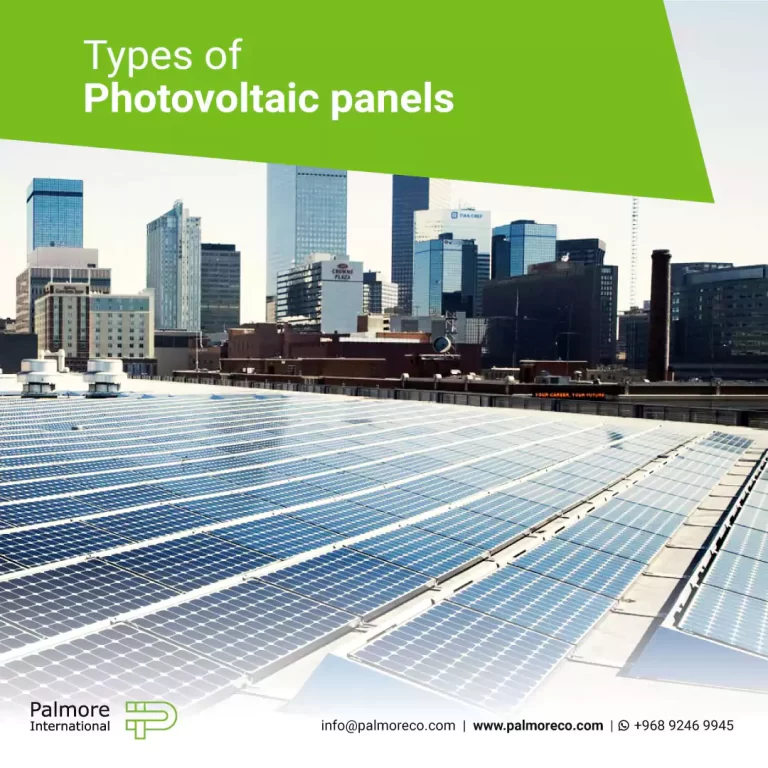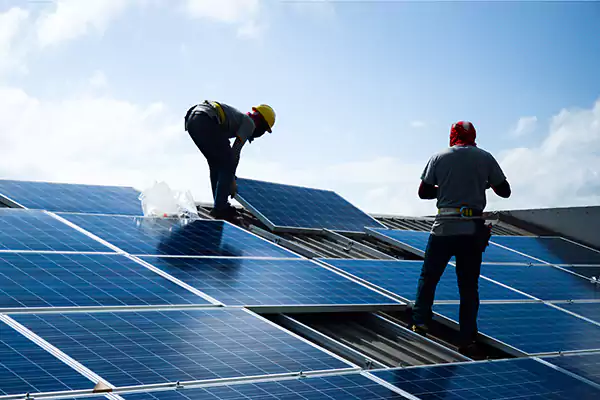
What are the 3 Types of photovoltaic panels?
In general, solar solar panels that are commercially produced today can be classified as follows:
1-Monocrystalline solar panels
2-Polycrystalline solar panels
3-Thin film solar panels
Currently, more than 90% of photovoltaic cells are made of various types of silicon. In 2011, about 95% of the panels sold to run home photovoltaic systems in the United States of America were crystalline silicon. Silicon is used to make solar panels in various ways. The most important difference is the purity of the silicon used. Crystalline silicon is the basis for making monocrystalline and polycrystalline solar cells.
1-Monocrystalline solar panels
Monocrystalline solar cells are made from pure crystal. Their integrated color simply distinguishes panels with this technology from other panels. Silicon crystals with rounded corners are used in the construction of these types of panels, which distinguish them from polycrystalline panels in terms of appearance.
1-1-Advantages of monocrystalline panels
The highest yield among panels (around 21%) due to the high manufacturing quality and high purity of silicon
Monocrystalline panels are the most efficient in using space and require less space for installation, and as a result, they are the best choice for places where there is a lack of space or the price of land is expensive.
They have the longest lifespan among panels, and for this reason, most manufacturers have a warranty of more than 20 years for this type of panel.
Compared to polycrystalline panels, they have better performance and efficiency in low light conditions.
Also Read this article
Interesting data about solar batteries
1-2-Disadvantages of monocrystalline panels
Due to the multi-stage and complex construction, they are the most expensive type of solar panels.
If the shadow falls on a part of the panel, or the panel becomes dirty and dusty, or if snow and hail sit on the panel, the entire panel will stop working and will not produce power.
Due to the manufacturing method of this type of panel, a lot of waste is created during their manufacture.
At high temperatures (usually above 30 degrees Celsius), the efficiency of this type of panel drops.
2-Polycrystalline solar panels
The first solar panels based on polycrystalline silicon were made in 1981, also known as polysilicon (P-Si) or multicrystalline silicon (mc-Si). The process of making this type of panels is simpler and the final price is lower. For this reason, the sale of this type of panel has been more than monocrystalline panels.
2-1-Advantages of polycrystalline panels:
The production process of polycrystalline silicon is simpler and less expensive.
The amount of silicon waste is less compared to the production of monocrystalline silicon.
In terms of temperature tolerance, polycrystalline solar solar panels have a lower temperature tolerance compared to monocrystalline panels; Although this effect is very small and can be ignored.
2-2-Disadvantages of polycrystalline panels:
Due to the lower purity of silicon, they are less efficient (about 16%) than monocrystalline panels.
Due to the lower efficiency compared to monocrystalline panels at a fixed power, more space is needed than polycrystalline panels. So they are not suitable for places with limited space and expensive land.
Compared to monocrystalline and thin layer panels, due to the irregularity of silicon, they are less beautiful.
Read this article
Applications of solar panels in buildings
3-Thin film solar panels
In simple terms, thin film photovoltaic panel technology is a method of producing solar cells, during which one or more thin layers of photovoltaic material are placed on a substrate. Various types of thin film cells can be divided based on the photovoltaic material used as follows:
Amorphous silicon (aSi)
Cadmium telluride (CdTe)
Copper Indium Gallium Selenide (CIS/CIGS)
Organic Photovoltaic Cells (OPC)
According to the research done and the investment of the private sector on the research and development of this technology, in the last few years, the efficiency of thin layer panels has increased in the research and laboratory sector; So that the efficiency of these panels has reached from about 10% to 14%.

3-1-Advantages of thin film solar panels:
Simple mass production; These panels can be produced at a lower cost than crystalline silicon-based panels.
The appearance of the building with the same shape and uniform color gives these panels more attractiveness in urban applications.
Thin film modules can be produced flexibly, which creates many potential applications.
High temperature and shade have the least effect on the performance of these panels.
Due to the lower efficiency compared to silicon crystal panels, it is used more in places where there is no problem of lack of space.
3-2-Disadvantages of thin film solar panels:
Due to the lower efficiency compared to other panels, they are not suitable for home projects and places with limited space.
Due to the lower efficiency of panels in space utilization, the cost of equipment such as structures and cables increases. But due to the fact that the major part of the investment cost is related to the panels themselves and the price of thin layer panels is lower, the overall cost is reduced.
Compared to silicon crystal panels, they suffer from efficiency loss sooner. Of course, in recent years, with the progress achieved, this problem has been significantly resolved. So that the guarantee of this type of panels is exactly the same as silicon crystal panels.
Today, thin film panels with CdTe and CIGS technology are used more in creating solar power plants.

